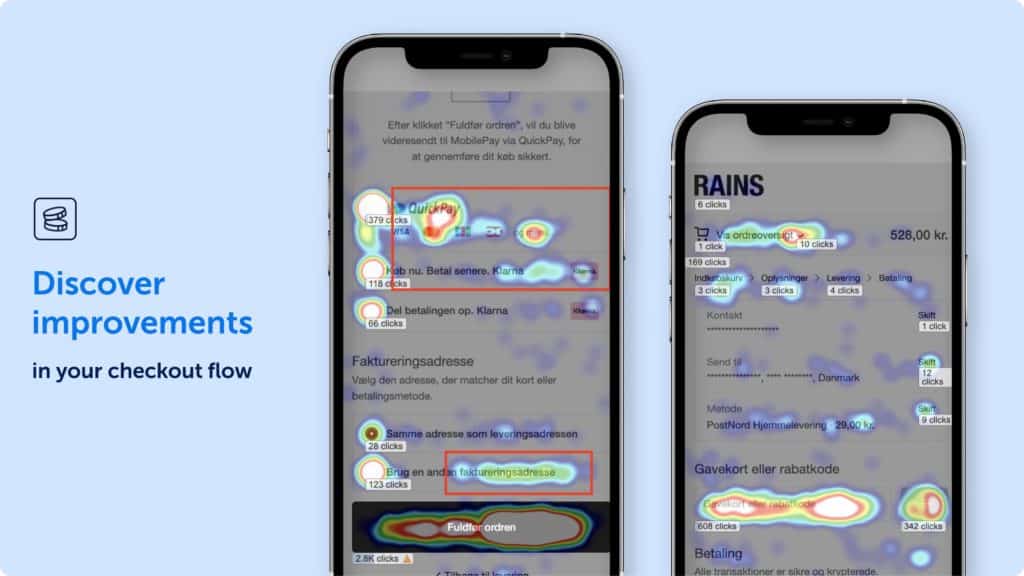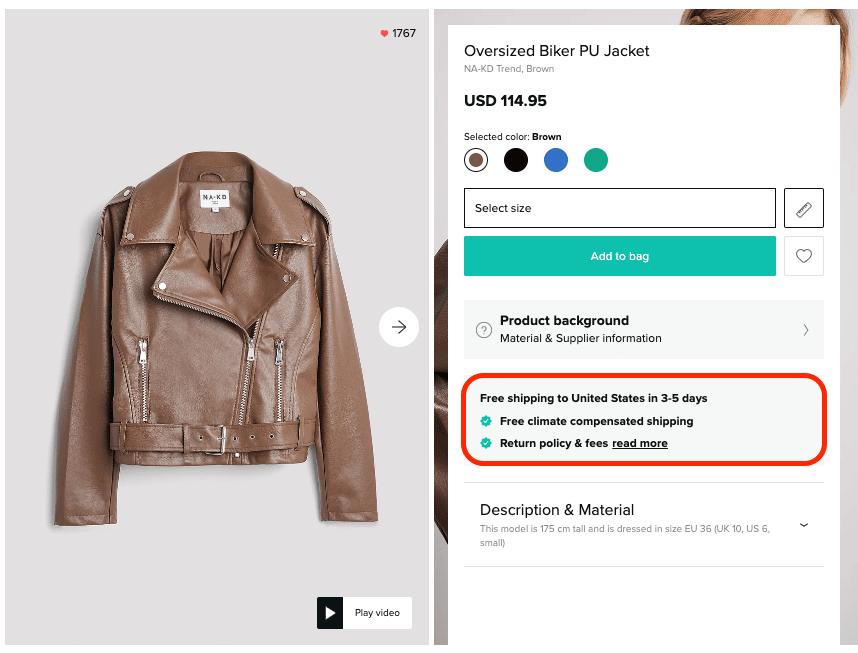Shoppers in 2025 expect seamless, personalized, and lightning-fast digital experiences, especially during Black Friday and Cyber Monday. Competition is fierce, and even the smallest UX friction can cost you thousands in lost revenue.
To help you prepare, we’ve gathered the most impactful customer experience strategies, all backed by real Mouseflow insights, so you can deliver a smooth, data-driven holiday shopping journey that converts.
1. Speed and Stability: Master Core Web Vitals Before Black Friday
Nothing kills excitement faster than a slow website, especially when shoppers are racing to grab limited-time deals. Even a one-second delay can cut conversions by 7%, so speed is your most valuable asset.
Before the rush, review your Core Web Vitals to make sure pages load quickly and stay stable under heavy traffic. Optimize images, use caching, and remove unnecessary scripts to keep things smooth.
Finally, look beyond numbers. Heatmaps and session recordings reveal frustration signals like rage clicks or repeated reloads that technical tools can miss. A fast, stable site builds trust and keeps customers moving confidently toward checkout.
2. Optimize Checkout UX with Behavior Insights
The checkout flow is where excitement turns into action or frustration. Even small barriers like unexpected fees, long forms, or limited payment options can make shoppers rethink their purchase.
Review your checkout from start to finish and remove any unnecessary steps. Offer guest checkout, auto-fill forms, and show total costs upfront to reduce hesitation.
Then, dig into user behavior. Conversion funnels and session recordings can help you see exactly where shoppers drop off and why. Maybe they struggle with a form field, or the “Place Order” button isn’t clearly visible on mobile. Identifying these moments helps you fix friction before it costs conversions.

Read how Danish fashion brand, Rains, increased their conversion rate for the checkout flow by 10.8%
3. Design for Mobile-First Shoppers
In 2025, more than 75% of all online purchases are made on mobile devices. Yet, many ecommerce sites still treat mobile as an afterthought and it shows in their conversion rates.
Your mobile experience should be fast, intuitive, and distraction-free. Keep CTAs large enough to tap easily, simplify navigation, and ensure forms auto-adapt to screen size.
Use scroll heatmaps to see how far users go before losing interest. Are key offers visible above the fold? Do shoppers reach your “Add to Cart” button without friction? These small insights often make the biggest difference when every tap counts.
4. Empower Shoppers with Smart Self-Service
Today’s shoppers expect instant answers, especially during high-traffic periods like Black Friday. Many prefer solving problems on their own rather than waiting for live support, so your self-service experience plays a big role in overall satisfaction.
Keep your FAQ section updated with clear, concise answers to common holiday-related questions such as shipping times, returns, or payment methods. Consider adding an AI-powered chatbot to help customers find the right information quickly – it’s one of the biggest CX trends going into 2025.
To make these tools even more effective, look at where users most often get stuck or abandon help pages. Behavioral analytics tools can reveal patterns like repeated clicks or high exit rates on FAQ content, helping you refine and simplify the path to answers.
5. Create Transparent Shipping and Returns UX
Hidden costs and unclear delivery times are among the fastest ways to lose customers — especially during high-stakes shopping events like Black Friday. Shoppers in 2025 expect full transparency before they commit to a purchase.
Clearly display delivery options, estimated arrival dates, and return conditions early in the customer journey — not just at checkout. Highlighting “Free Shipping” or “Easy Returns” builds trust and can increase conversions, particularly on mobile where users decide fast.
To fine-tune your messaging, track where customers hesitate or abandon their carts after seeing shipping details. If many users leave at that step, it’s a sign the information isn’t clear enough or appears too late in the flow. Small tweaks in how you present costs or guarantees can have a big impact on buyer confidence.

6. Use Behavior Data to Prevent Cart Abandonment
Cart abandonment always spikes during Black Friday and Cyber Monday — and with traffic at its highest, even small issues can cost big sales. Shoppers drop off for many reasons: hidden costs, slow checkout steps, or uncertainty about delivery.
Start by identifying where most users abandon their carts. Behavior data, such as repeated clicks or form errors, can reveal points of frustration that traditional analytics miss. Fixing these early improves both conversion and customer confidence before the sales rush begins.
For the customers who still leave, plan a simple cart recovery strategy: send automated reminder emails, highlight limited stock, or offer a small, time-sensitive discount to bring them back. Combining real behavior insights with smart incentives can make the difference between a lost sale and a loyal customer.
7. Build Trust Through Omnichannel Experience
During Black Friday and Cyber Monday, customers often jump between channels, from social media to email to your website, before making a purchase. A seamless and consistent experience across those touchpoints can make or break the sale.
Keep your messaging, visuals, and offers aligned so shoppers immediately recognize your brand, no matter where they engage. If your ad promotes “Free Shipping Today Only,” make sure that same offer is easy to spot once they land on your site.
You can also review how visitors arriving from different sources behave once they’re on your site. If social or email traffic tends to bounce quickly, it may signal a mismatch between expectations and the onsite experience. Aligning your channels builds trust and ensures that your Black Friday message feels cohesive, not confusing.
8. Analyze and Learn Post-Black Friday
Once the rush is over, your real insights begin. Reviewing how visitors behaved during Black Friday and Cyber Monday helps you understand what worked and what didn’t.
Look for patterns in user journeys: Which landing pages had the best engagement? Where did shoppers hesitate or leave? Comparing behavior data year over year can reveal trends that guide your 2026 planning.
Don’t just track sales numbers, track experiences. Understanding how visitors interacted with your site allows you to refine navigation, content, and performance long before the next big sales event.
Final Thoughts
As Black Friday and Cyber Monday continue to evolve, one thing stays the same: shoppers expect smooth, fast, and trustworthy online experiences. Every click, scroll, and hesitation tells a story about what matters most to them.
By focusing on clarity, consistency, and behavior-driven improvements, you can create a customer journey that not only converts, but builds lasting loyalty. The brands that take time to understand why users act the way they do are the ones that stand out when competition peaks.
Whether you’re testing page performance, refining checkout flows, or learning from post-sale data, each small step helps create a better experience next season.

